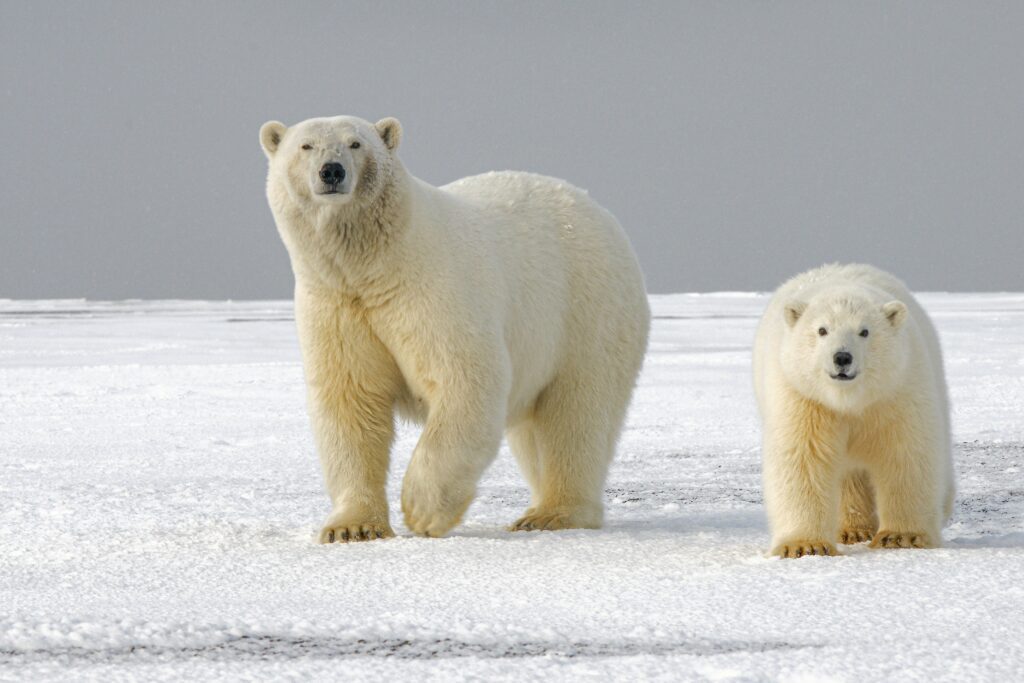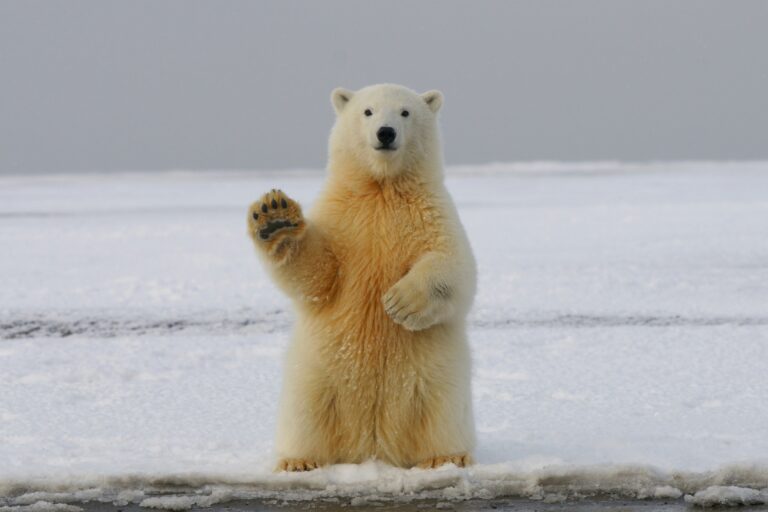The polar bear, often regarded as the majestic king of the Arctic, stands as an emblem of the icy wilderness. With its thick fur, powerful frame, and unique adaptation to the frigid environment, the polar bear has long captivated the imagination of people worldwide. However, beneath its awe-inspiring appearance lies a stark reality – the polar bear is a marine mammal facing unprecedented threats. In this article, we delve into the challenges confronting the polar bear and explore the urgent need for conservation efforts to safeguard its future.
Melting Sea Ice
The Arctic region is experiencing a rapid decline in sea ice due to climate change. This melting sea ice has profound implications for both the environment and various species that depend on it for survival.
Impact on Polar Bear Habitat
Polar bears rely on sea ice as a platform for hunting seals, their primary food source. With the melting of sea ice, polar bears are losing vital hunting grounds. As the ice retreats further and faster each year, polar bears are forced to swim longer distances, expending more energy and increasing their risk of starvation. The loss of sea ice also reduces the amount of time polar bears have to hunt, as they rely on the ice edge to ambush seals.
Disruption of Marine Ecosystems
The melting sea ice disrupts marine ecosystems, affecting species ranging from plankton to whales. Sea ice provides a habitat for algae and other primary producers, which form the base of the marine food web. With less sea ice, these primary producers have less habitat, leading to potential declines in their populations. This, in turn, affects higher trophic levels, including fish, seabirds, and marine mammals, which depend on these primary producers for food.
Impact on Indigenous Communities
Indigenous communities in the Arctic have relied on sea ice for thousands of years for hunting, transportation, and cultural practices. The loss of sea ice threatens their traditional way of life, as it reduces access to hunting grounds and makes travel more hazardous. Additionally, melting sea ice can lead to coastal erosion and the loss of important infrastructure, such as homes and community buildings, further impacting these communities.
Feedback Loop of Climate Change
The melting of sea ice contributes to a feedback loop of climate change. Sea ice reflects sunlight, helping to cool the Earth’s surface. As sea ice melts, the darker ocean water absorbs more sunlight, leading to further warming and more ice melt. This amplifies the effects of climate change, leading to even more rapid melting of sea ice and exacerbating the impacts on Arctic ecosystems and communities.

Pollution and Contaminants
Pollution and contaminants in the environment pose significant risks to both ecosystems and human health. From industrial chemicals to agricultural runoff, various sources contribute to the accumulation of toxins in the environment, leading to widespread consequences.
Bioaccumulation of Toxins
Bioaccumulation refers to the process by which toxins accumulate in the tissues of organisms over time. This occurs when organisms ingest contaminated food or water, and the toxins are absorbed and stored in their bodies. As predators consume prey containing these toxins, the contaminants become more concentrated at each trophic level of the food chain. Top predators, such as apex predators or humans, can accumulate high levels of toxins in their bodies, leading to potential health risks. Common pollutants that bioaccumulate include heavy metals like mercury, persistent organic pollutants (POPs) such as PCBs and dioxins, and pesticides like DDT.
Effects on Health and Reproduction
Exposure to pollutants and contaminants can have detrimental effects on both human and wildlife health, including reproductive issues and developmental abnormalities. For humans, consuming contaminated food or water can lead to a range of health problems, including neurological disorders, cancer, and reproductive issues. Pregnant women and children are particularly vulnerable to the effects of exposure to environmental toxins, as they can disrupt fetal development and lead to long-term health consequences. In wildlife, contaminants can interfere with reproductive success, leading to population declines and genetic abnormalities. For example, exposure to endocrine-disrupting chemicals (EDCs) can disrupt hormone systems, leading to impaired fertility and reproductive function in various species.
Mitigation Strategies
To address the issue of pollution and contaminants, various mitigation strategies are employed at local, national, and global levels. These strategies include implementing regulations to limit the release of pollutants into the environment, promoting cleaner production methods in industries, and investing in pollution control technologies. Additionally, efforts to monitor and assess environmental contamination help identify hotspots of pollution and prioritize remediation efforts. Public awareness and education campaigns also play a crucial role in reducing exposure to toxins by informing individuals about the sources and potential health risks of pollution, as well as providing guidance on how to minimize exposure through lifestyle choices and behavior changes.



